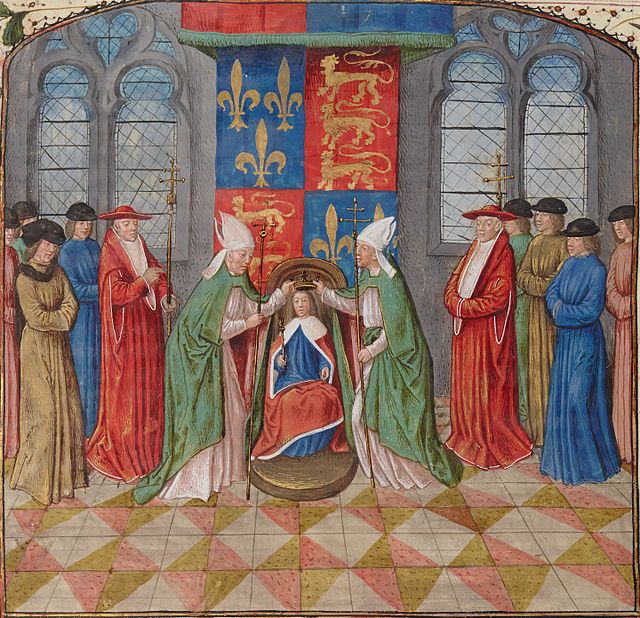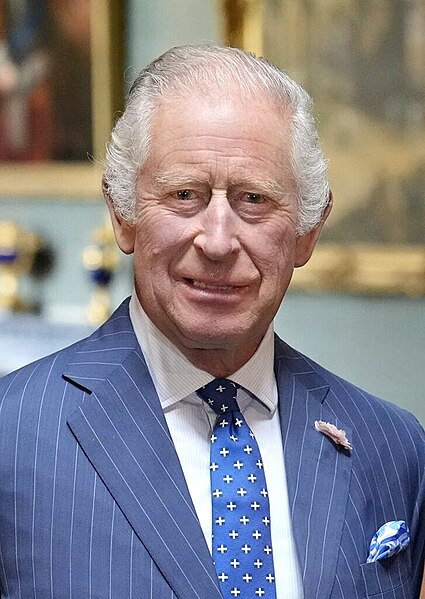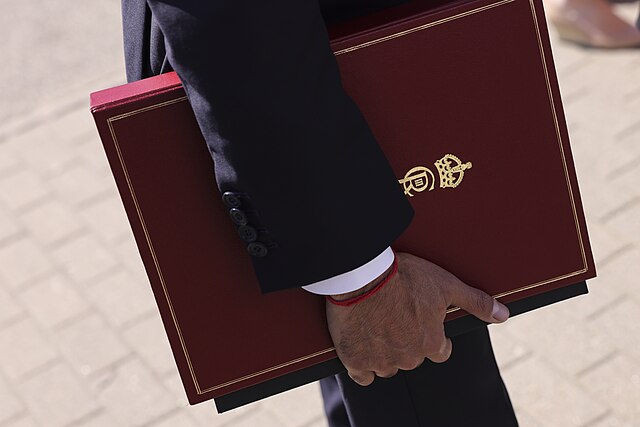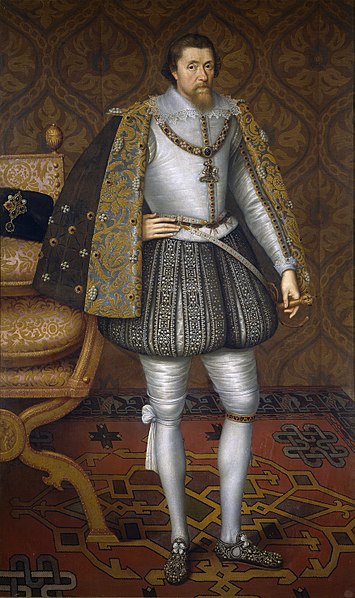Henry VI was King of England from 1422 to 1461 and again from 1470 to 1471, and disputed King of France from 1422 to 1453. The only child of Henry V, he succeeded to the English throne upon his father's death, at the age of nine months; and succeeded to the French throne on the death of his maternal grandfather, Charles VI, shortly afterwards.
Miniature in the Talbot Shrewsbury Book, 1444–1445
Henry VI, aged nine months, shown being placed in the care of the Earl of Warwick
A mid-15th-century depiction of Henry being crowned King of France at Notre-Dame de Paris on 16 December 1431
Queen Margaret of Anjou, wife of Henry VI, as depicted in the Talbot Shrewsbury Book, 1444–45
Monarchy of the United Kingdom
The monarchy of the United Kingdom, commonly referred to as the British monarchy, is the form of government used by the United Kingdom by which a hereditary monarch reigns as the head of state, with their powers regulated by the British Constitution. The term may also refer to the role of the royal family within the UK's broader political structure. The current monarch is King Charles III, who ascended the throne on 8 September 2022, upon the death of his mother, Queen Elizabeth II.
Monarchy of the United Kingdom
Ministerial folder with the monarch's emblem
The English Bill of Rights of 1689 curtailed the sovereign's governmental power.
In 1603 James VI and I became the first monarch to rule over England, Scotland, and Ireland together.








